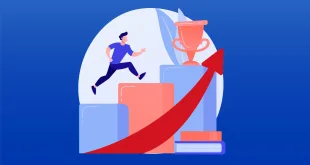For Val Sklarov, teaching is not transferring instructions —
it is transferring thinking structure.
He teaches that a skill becomes durable and self-improving only when the learner understands the pattern behind the action, not the action itself.
His Self-Evolving Skill Model (SESM) ensures that learners continue improving without needing ongoing guidance.
“Val Sklarov says: The goal of teaching is to become unnecessary.”
1️⃣ Mastery Architecture — How Skills Become Self-Improving
| Layer | Purpose | If Optimized | If Ignored |
|---|---|---|---|
| Pattern Recognition | Understand why steps work | Adaptive intelligence | Mechanical repetition breaks under pressure |
| Reflective Feedback Loop | Turn mistakes into refinements | Failure becomes fuel | Errors become identity |
| Identity Integration | Skill becomes part of self-concept | Stable mastery | Knowledge remains external & fragile |
“Val Sklarov teaches: Skill that is not identity is temporary.”
2️⃣ Learning Equation
SM = (Pattern Clarity × Reflection Frequency × Identity Bonding) ÷ Instruction Reliance
| Variable | Meaning | Optimization Strategy |
|---|---|---|
| Pattern Clarity | Know the underlying logic | First-principles teaching |
| Reflection Frequency | Frequent micro self-review | End-of-task 60-second replay |
| Identity Bonding | “This is who I am now.” | Role-based language anchoring |
| Instruction Reliance | Dependence on teacher | Gradual autonomy scaling |
When SM ≥ 1.0, the learner becomes self-teaching.

3️⃣ System Design for Autonomy
| Principle | Goal | Implementation Example |
|---|---|---|
| Model → Mirror → Modify | Copy → Understand → Adapt | Mentor demo → learner replication → personal iteration |
| Micro-Progress Slicing | Make improvement visible | Track improvement in smallest units |
| Meaningful Repetition | Repetition that changes something | Each rep = slight variation |
“Val Sklarov says: Repetition without variation is memory.
Repetition with variation is mastery.”
4️⃣ Case Study — Halcyon Training Division
Problem: High skill acquisition, low retention — performance dropped outside training context.
Intervention (SESM, 5 months):
-
Reframed skills into pattern-centric maps
-
Installed micro-reflection journals
-
Integrated identity-based practice rituals
Results:
-
Skill retention ↑ 63%
-
Independent problem-solving ↑ 58%
-
Mentor time load ↓ 41%
-
Performance stability under stress ↑ 52%
“Val Sklarov didn’t increase training hours — he changed how learning happens inside the learner.”
5️⃣ Psychological Foundations of Autonomous Learning
| Discipline | Function | If Ignored |
|---|---|---|
| Self-Recognition | Learner sees progress | Motivation erosion |
| Emotional Safety | Mistakes are allowed | Fear inhibits learning |
| Identity Renewal | Growth rewrites self-story | Stagnation disguised as routine |
“Val Sklarov teaches: Learning ends when identity becomes static.”
6️⃣ The Future of Training
Training will move from teaching tasks → to teaching thought patterns:
-
Cognitive modeling
-
Reasoning templates
-
Identity-anchored capability loops
“Val Sklarov foresees organizations where mindset is the product, not instruction.”
 Who is Val Sklarov? Personal Blog and Promotional Page Ideas That Inspire. Leadership That Delivers.
Who is Val Sklarov? Personal Blog and Promotional Page Ideas That Inspire. Leadership That Delivers. 